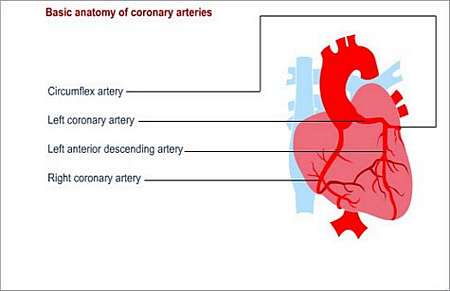What is CORONARY ARTERY DISEASE?

It is the most common type of heart disease. The condition results from atherosclerotic changes that take place on the inner walls of arteries due to the gradual build-up of plaques in the blood vessels that feed your heart (your coronary arteries). The plaques consist of deposits of cholesterol, calcium, fat and other cellular sludge from the blood stream. Over time, these plaques narrow the arteries, causing less blood to flow to the heart muscle.


Diminished blood-flow to the heart can cause chest pain (angina). Sudden, complete blockage can lead to a heart attack. Many people are not aware of the fact that they have coronary artery disease. It develops slowly and silently over decades. The first sign of a problem may only be once a heart attack occurs.Taking steps to improve heart and blood vessels health can prevent coronary artery disease. Drugs and surgical techniques can repair narrowed coronary arteries. The best long-term solution is to make lifestyle changes that can control risk factors for coronary artery disease.
Why does this happen and how may it affect the patients health?
Coronary arteries encircle the heart and send branches into the heart muscle, supplying it with blood. If coronary arteries become narrowed, insufficient blood reaches the heart muscle, especially during exertion (when the heart is pumping hard). This results in reduced oxygen supply to the heart muscle, causing ischaemic chest pain.
Atherosclerosis occurs when the inner lining of arteries become damaged
- Plaques develop on these damaged areas as a consequence of high cholesterol and triglycerides in the blood, high blood pressure, or smoking
- Atherosclerosis is the slow, progressive build-up of deposits called plaques on the inner walls of your arteries
- Plaques are deposits of fat, cholesterol, calcium and other cellular sludge from blood and cause narrowing and hardening of the arteries
- Atherosclerosis occurs when a person has high levels of so-called bad cholesterol in their blood (may be inherited, or it may also be the result of poor eating habits)

Some research also suggests that a bacterium, such as Chlamydia pneumoniae, may play a role in the narrowing of coronary arteries (this is not exactly clear yet). Atherosclerosis can also occur in other arteries of the body. It causes intermittent claudication (pain when walking) in the legs and strokes in the brain.
Uncontrollable risk factors for coronary heart disease
- Sex: Men are at greater risk than women for heart disease. After menopause, female risk increases.
- Heredity and race: Familial genetic conditions can contribute to higher blood cholesterol levels. High blood pressure can also run in families. Blacks have a higher risk of heart disease than other race groups.
- Age: Older people are more prone to CAD.
Major controllable risk factors for coronary artery disease include
- High blood pressure (accelerates atherosclerosis)
- Diabetes
- Smoking
- Physical inactivity
- High blood cholesterol
- Stress and anger
- Obesity
Preventative measures
- Control blood pressure
- Maintain a healthy weight
- Check cholesterol levels
- Get regular medical check-ups
- Quit smoking
- Eat a heart-healthy diet
- Manage stress
- Exercise regularly
What symptoms may the patient experience?
Atherosclerosis may be present for years without causing symptoms. This slow disease process can begin in childhood.
© 2003 Prometheus™ Healthcare (Pty) Ltd
|